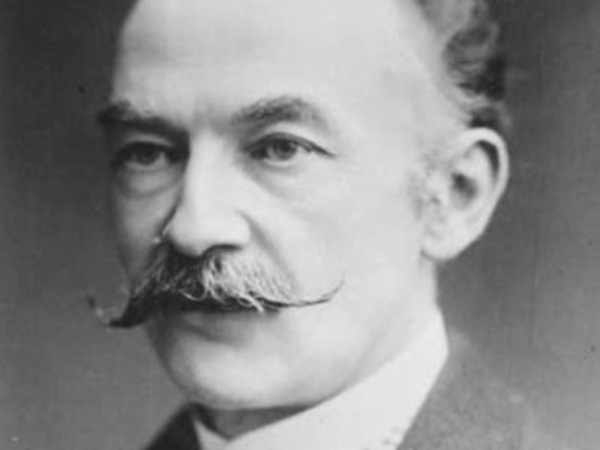Thomas Hardy's Ale: Return of the Native
Added: Sunday, September 18th 2016

Thomas Hardy’s Ale is back and that’s cause for celebration. In common with mild and bitter, barley wine is a quintessentially English beer style and we lost part of our brewing heritage when Hardy’s Ale disappeared in 2009.
Its revival at first seems odd. I had to go to Milan for the official launch, which is a long way from what Hardy would call its “natal borough” in Dorset. But the Baladin Bar in Italy’s second city was packed for the event with beer lovers and print, radio and TV journalists in attendance. It is a very famous ale and the launch was the perfect start to Milan Beer Week, a key annual event for Italian beer lovers.
It’s now owned by Interbrau, an Italian company that imports and exports beer, run by the brothers Sandro and Michele Vecchiato. When news of their ownership first surfaced, doubts were raised: how could English strong ale be brewed in a country best known for wine, not beer?
I can put the doubts to rest: Thomas Hardy’s Ale is brewed in England, at Meantime Brewery in London and in the tender loving care of master brewer Alastair Hook. Alastair trained at both Heriot-Watt and Munich brewing schools. He loves traditional brewing styles, both ale and lager, and is experienced at producing bottle-conditioned beers. In short, he’s a safe pair of hands.
But how did this revered beer end up owned by Italians? Like a Thomas Hardy novel, it’s a long story. Hardy was born, lived and died in the Dorchester area, at the heart of his ever-expanding, semi-fictional region of Wessex. He loved the area, its people and its beer. In The Trumpet Major he famously wrote of Dorchester ale: “It was of the most beautiful colour that the eye of an artist in beer could desire; full in body, yet brisk as a volcano; piquant, yet without a twang; luminous as an autumn sunset; free from streakiness of taste, but, finally, rather heady. The masses worshipped it, the minor gentry loved it more than wine...”
In 1968, the Dorchester brewer Eldridge Pope produced a beer for a literary festival that celebrated the writer’s life and marked the 40th anniversary of his death. The beer was 12% alcohol and was aged in sherry casks for nine months before it was bottled. It was meant to be a one-off brew but it aroused such interest that it became an annual vintage.
Waiting for the new edition each year aroused as much interest among beer lovers as the annual Bordeaux vintage does for wine connoisseurs. I recall an amazing tasting of Thomas Hardy vintages conducted by Christopher Pope, chairman of the brewery. Some bottles had driven corks, others crown caps. The size and shape of bottles varied and the tasters found fascinating variations in aroma and palate from one year to the next, but all with a solid backbone of vinous fruit, toasted grain and peppery hops.

Eldridge Pope made the calamitous decision to divide brewing from retailing in the 1990s. Its pubs were gobbled up by predators and the brewery finally closed in 2004, with the last vintage of Hardy’s Ale produced in 1999. The loss of the beer caused enormous distress not only to beer lovers in Britain but also to George Saxon, an American who had successfully imported the beer to the U.S. for several years.
His company is called, fittingly, Phoenix Imports, and he rescued Hardy’s Ale by buying the brand and getting O’Hanlon’s Brewery in Devon to brew it. The beer reappeared in 2003 and was met with acclamation, underscored when it won the Supreme Champion Award in the 2006 International Beer Challenge held in London.
But once again – and very Hardyesque -- hubris was followed by nemesis. O’Hanlon’s said it took so long to make a batch of Hardy’s Ale that it held up its mainstream beers and it stopped production in 2009.
Another rescue bid followed, with the Vecchiato brothers buying Thomas Hardy’s from George Saxon. It’s being brewed once more and the first vintage I tasted this month was superb: smoky, fruity (blackcurrants), with burnt grain and peppery hops. It’s brewed with pale and crystal malts and hopped with English Challenger, Goldings and Northdown, with Styrian Goldings. The finished beer has 75 units of bitterness.
Primary fermentation lasts for 2½ weeks as the yeast grapples with such a large amount of malt sugar. The beer then enjoys three months’ secondary fermentation and ageing, followed by one month of cold conditioning and nine months in bottle before it’s released.
And it will improve with age – for up to 25 years, it is claimed. The beer comes in an attractive box with a book on the history and revival of the beer in English, written by leading Italian beer writer Maurizio Maestrelli.
Interbrau plans to launch the beer in London early next year. I pleaded with Sandro Vecchiato to bring it to the UK as fast possible.
When you acquire a bottle, it should, perhaps, best be sipped and savoured while reading Hardy’s novel The Return of the Native.









